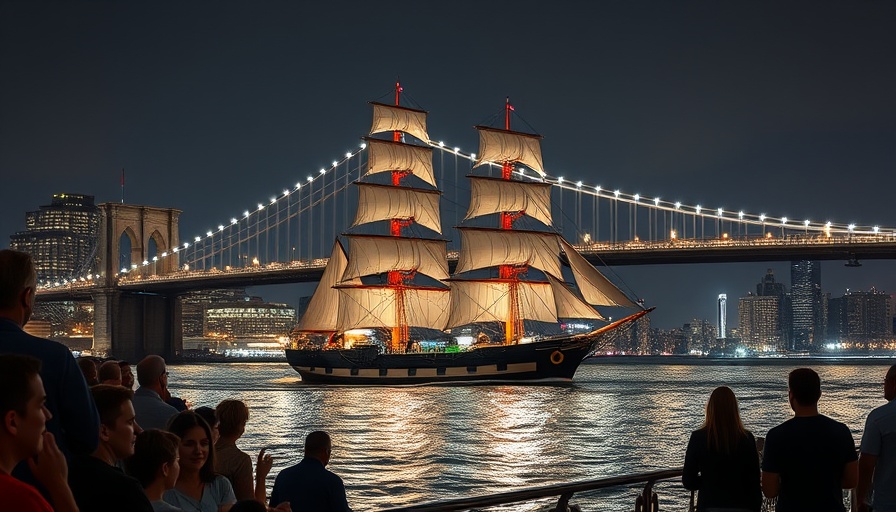
The Perils of Urban Navigation: Lessons from the Brooklyn Bridge Incident
The recent incident involving the Cuauhtémoc, a tall ship used for training sailors in the Mexican Navy, crashing into the Brooklyn Bridge serves as a stark reminder of the dangers navigators face in urban waters. Although minor damage to the bridge was reported, the event raised significant concerns among pedestrians and drivers alike. Witnesses described the jarring experience, particularly as one mother recounted her chilling reaction when the ship seemed to appear out of nowhere, leading to a heart-stopping moment as it collided with the iconic bridge.
Historical Context of Accidents on the Brooklyn Bridge
The Brooklyn Bridge, constructed in the 19th century, is a marvel of engineering that has stood the test of time. Its robust design was intended to handle heavy loads, a fact evidenced by the bridge's impressive safety factor—around six times its rated capacity. However, its location poses ongoing risks. The bridge is the first encountered by ships entering from the Atlantic, making it a frequent site for mishaps. Historical records indicate that the bridge has been struck multiple times since its opening: notably by a schooner in 1921, a freighter in 1935, and even as recently as 2014. Each incident raises questions about navigation safety and the adaptations needed for urban waterways.
Human Experience and Emotional Response
What often gets lost in the numbers and engineering statistics is the human element. Witnesses who were present during the crash expressed a whirlwind of emotions, ranging from shock to fear. One mother mentioned how her daughter reacted without understanding the gravity of the situation, pointing out the ship before they even reached the bridge. This illustrates that while adults often process danger differently, the impact of witnessing a traumatic incident can affect us all. The experience led the mother to rethink her regular routes, emphasizing how one event can alter our perception of safety in our urban environment.
The Intersection of Urban Design and Safety
The Brooklyn Bridge's structural integrity is an engineering triumph, but incidents like the Cuauhtémoc crash highlight a critical gap in urban design and maritime navigation. As cities expand and maritime traffic increases, it is essential to examine whether existing regulations are adequate to ensure safe passage for both vessels and vehicles. Collaboration between city planners, mariners, and engineers could lead to improved signage, better-maintained navigational aids, and even technological advancements such as automated alerts for bridge clearance.
Future Predictions and Urban Waterway Safety
With the growing awareness surrounding urban safety, predictions suggest that there will be shifts in how we manage waterways near bustling metropolitan areas. Experts might advocate for updated infrastructure around bridges, including advanced technology for larger vessels, real-time tracking systems for ships, and possibly creating exclusion zones for certain areas during peak traffic times. Implementing these changes could significantly reduce the potential for accidents and enhance public safety, fostering a more harmonious relationship between urban settings and their waterways.
Community Conversations and Engagement
As residents of cities like New York reflect on their safety while navigating the Brooklyn Bridge, community conversations become essential. Initiatives that encourage public engagement in urban planning and safety assessments can empower citizens to advocate for changes that matter most to them. Programs that include educational components about the risks associated with urban waterways can equip the public with the knowledge to navigate these spaces with greater awareness, ultimately leading to safer environments.
While the Brooklyn Bridge continues to stand strong, incidents like the Cuauhtémoc collision prompt valuable conversations about the intersection of urban design, safety, and community engagement. As we reflect on the lessons learned from such experiences, it becomes crucial that we prioritize dialogue and active participation in creating safer public spaces for everyone.
 Add Row
Add Row  Add
Add 




 Add Row
Add Row  Add
Add 

Write A Comment